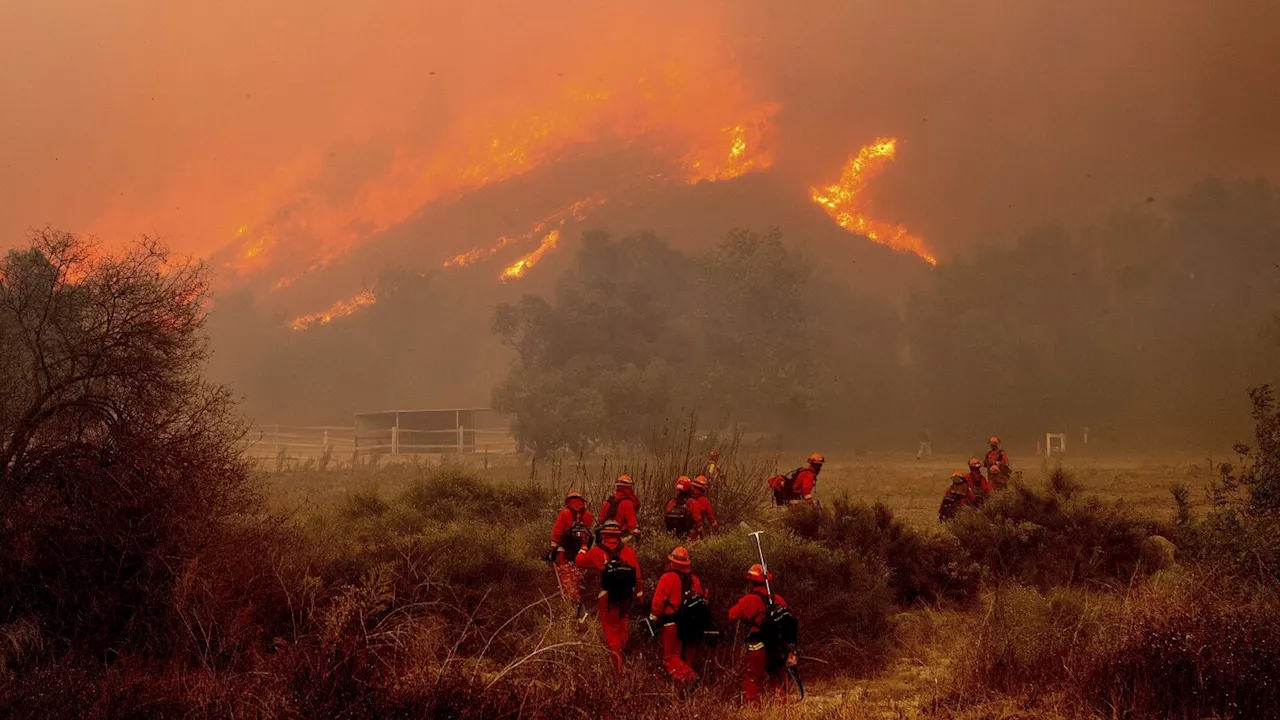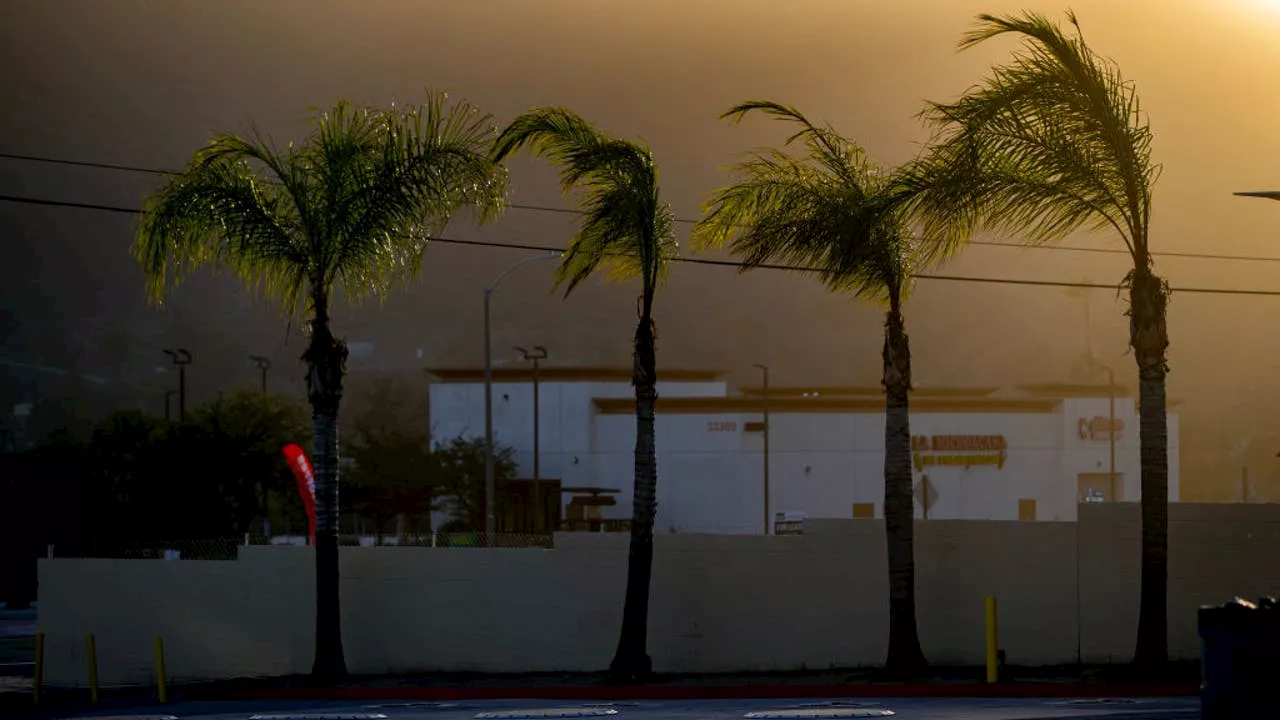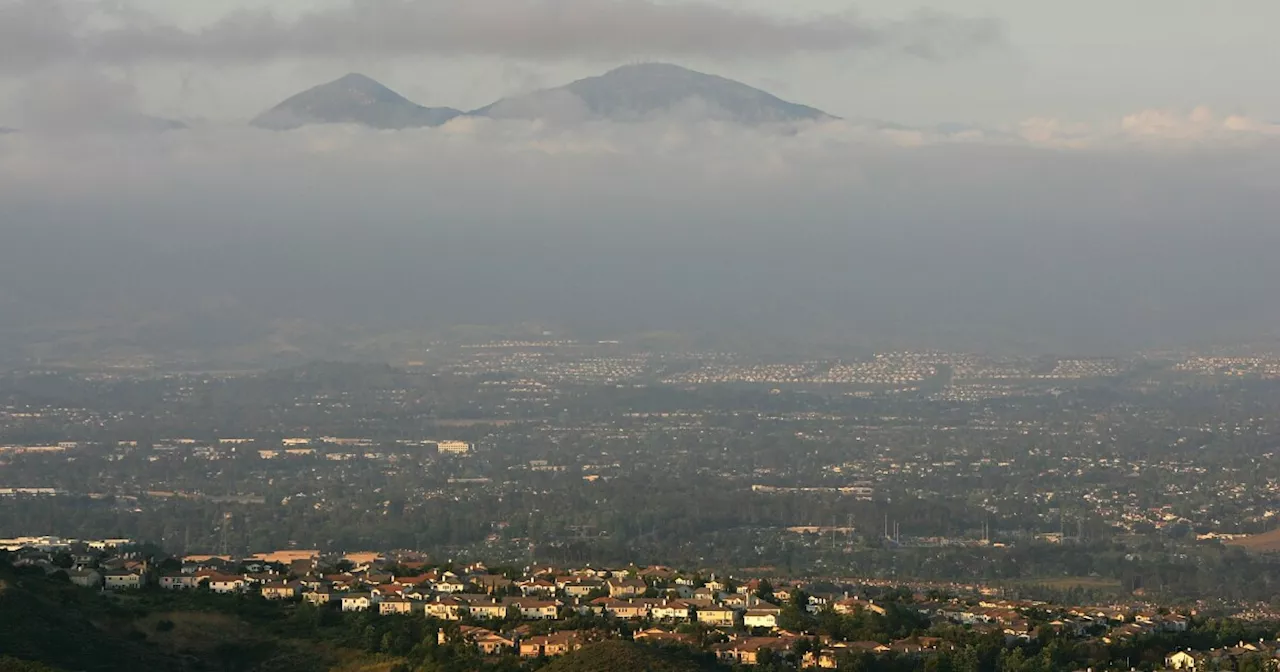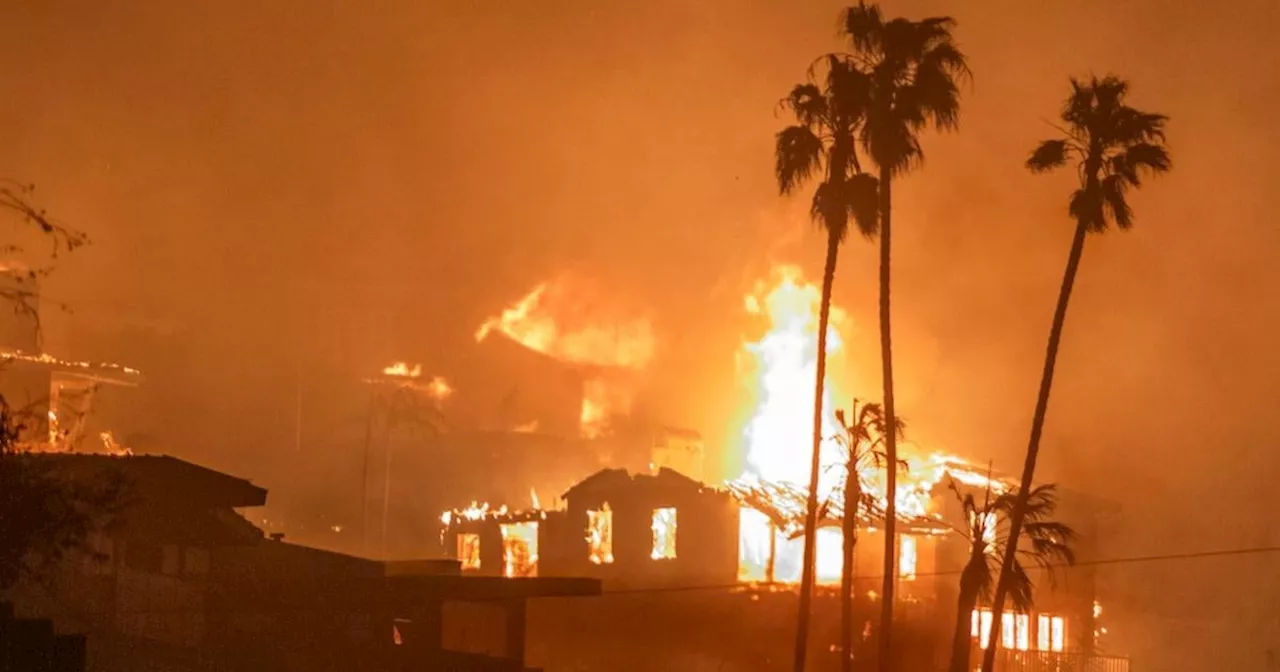Multiple large wildfires are burning in Southern California, fueled by dangerous Santa Ana winds. The fires have resulted in fatalities, widespread evacuations, and thousands of acres burned.
At least five wildfires are ravaging Southern California, and the three largest — which are at 0% containment — have already killed at least two people, burned thousands of acres and prompted the evacuation of about 70,000 residents. Santa Ana winds coupled with dry conditions have created the perfect storm for the fires to spread.
Hurricane-force winds have fanned the flames of the Palisades Fire, currently burning on the west side of Los Angeles County in coastal communities including Pacific Palisades and Malibu. The winds are also blowing the embers of the Eaton Fire, which is impacting the cities of Pasadena and Altadena in northeast L.A. County. Santa Ana winds flow east to west through Southern California's mountains, according to the National Weather Service. They begin when winds from the desert flow westward toward an area of low pressure, near the coast, like L.A. The winds usually originate in the Great Basin of the United States between September and May. This area, east of California, is at a higher elevation than L.A., and as the air drops, its temperature rises, according to Dr. Robert Fovell, a UCLA professor of atmospheric and oceanic sciences. These winds are more common in colder months when the desert air is cool. As the winds drop in altitude and increase in temperature, they also drop in humidity, causing a dryness. Vegetation can dry out and wildfires can start, with the winds fanning the flames.On Monday, the National Weather Service forecasted a strong Santa Ana winds event for L.A. through Friday, with the strongest gusts, which were likely to down power lines, arriving Tuesday and Wednesday. On Tuesday morning, 79 mph winds were reported and were expected to reach 100 mph in some areas. Another bout of Santa Ana winds is forecast for Friday, with another on its tail on Sunday, according to the weather servic
WILDFIRE SANTA ANA WINDS CALIFORNIA LOS ANGELES EVACUATION
United States Latest News, United States Headlines
Similar News:You can also read news stories similar to this one that we have collected from other news sources.
 Thousands without power as Santa Ana winds bring increased fire risk for Southern CaliforniaPower to tens of thousands of people had been shut off by Monday night as utilities worked to mitigate the impacts of Southern California’s notorious Santa Ana winds, whose strong gusts could damage electrical equipment and spark wildfires.
Thousands without power as Santa Ana winds bring increased fire risk for Southern CaliforniaPower to tens of thousands of people had been shut off by Monday night as utilities worked to mitigate the impacts of Southern California’s notorious Santa Ana winds, whose strong gusts could damage electrical equipment and spark wildfires.
Read more »
 Strong Santa Ana winds threaten Southern California with 'highest possible' fire dangerSanta Ana winds will bring the 'highest possible' fire danger to the majority of Los Angeles and Ventura counties through Wednesday, according to the National Weather Service.
Strong Santa Ana winds threaten Southern California with 'highest possible' fire dangerSanta Ana winds will bring the 'highest possible' fire danger to the majority of Los Angeles and Ventura counties through Wednesday, according to the National Weather Service.
Read more »
 Santa Ana winds back in Southern CaliforniaA Fire Weather Watch has been issued for Tuesday night into Thursday as Santa Ana winds sweep back into the Southern California forecast, according to the National Weather Service.
Santa Ana winds back in Southern CaliforniaA Fire Weather Watch has been issued for Tuesday night into Thursday as Santa Ana winds sweep back into the Southern California forecast, according to the National Weather Service.
Read more »
 Fire weather watch issued as moderate Santa Ana winds expected in Southern CaliforniaThe National Weather Service has issued a fire weather watch in Los Angeles and Ventura counties as Santa Ana winds are expected to lower humidity.
Fire weather watch issued as moderate Santa Ana winds expected in Southern CaliforniaThe National Weather Service has issued a fire weather watch in Los Angeles and Ventura counties as Santa Ana winds are expected to lower humidity.
Read more »
 Santa Ana Winds Return to Southern California, Bringing Fire RiskSanta Ana winds are back in Southern California, posing a fire risk. A Fire Weather Watch and Red Flag Warning have been issued for the region.
Santa Ana Winds Return to Southern California, Bringing Fire RiskSanta Ana winds are back in Southern California, posing a fire risk. A Fire Weather Watch and Red Flag Warning have been issued for the region.
Read more »
 Southern California Braces for Powerful Santa Ana Winds Fueling Wildfires and LandslidesSouthern California is facing dangerous conditions due to strong Santa Ana winds driving wildfires and landslides. High temperatures and low humidity exacerbate the situation, creating a heightened risk of fire spread. Officials have issued red flag warnings for Los Angeles and Ventura counties, urging residents to be vigilant. Meanwhile, in Rancho Palos Verdes, a massive landslide has destroyed homes and forced residents to make difficult decisions about their future.
Southern California Braces for Powerful Santa Ana Winds Fueling Wildfires and LandslidesSouthern California is facing dangerous conditions due to strong Santa Ana winds driving wildfires and landslides. High temperatures and low humidity exacerbate the situation, creating a heightened risk of fire spread. Officials have issued red flag warnings for Los Angeles and Ventura counties, urging residents to be vigilant. Meanwhile, in Rancho Palos Verdes, a massive landslide has destroyed homes and forced residents to make difficult decisions about their future.
Read more »
